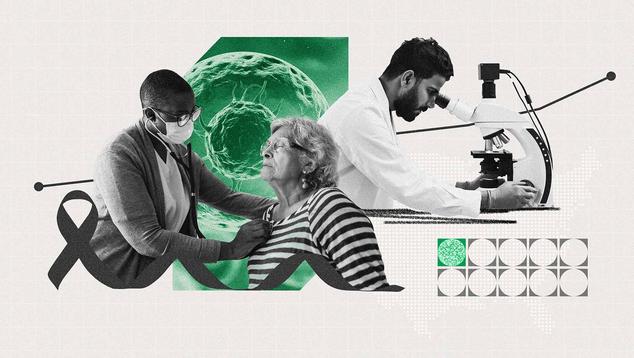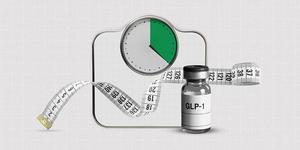WASHINGTON, D.C. — The percentage of U.S. adults who report ever being diagnosed with cancer has now reached 9.7% in 2024-2025, a significant increase from the 7.0% Gallup recorded in 2008-2009. The share of adults with a cancer diagnosis in their lifetime registered just over 7% from 2010 to 2015, before starting to climb. It has increased at a greater pace over the past decade.
Gallup’s measurement of cancer prevalence rates is part of its ongoing National Health and Well-Being Index. Shown in two-year averages, the most recent results are based on 16,946 U.S. adults surveyed by web during the first three quarters of 2025 and another 23,969 adults surveyed in 2024 as part of the Gallup Panel. For the rate of lifetime diagnoses, Gallup asks, “Has a doctor or nurse ever told you that you have cancer?”
The rise in reported lifetime cancer diagnoses over the past 18 years has occurred amid slightly lower rates of new incidences of cancer over much of this time. The U.S. Centers for Disease Control and Prevention (CDC) reports that, per capita, new cancer cases eased by 4% over a 10-year period, from 460.5 per 100,000 persons in 2013 to 442.3 per 100,000 in 2022.
Despite the modest but broad-based declines, new incidences for some cancer types are on the rise for women (such as breast cancer, particularly for women under 50) and for younger adults. Researchers from the National Institutes of Health (NIH), for example, recently found increases in incidence of 14 cancer types among people younger than 50, from 2010 through 2019, alongside decreases among 19 other cancer types, demonstrating a mixed picture in early-onset diagnoses. Taken together, these results indicate that the slowly rising percentage of Americans who have had a cancer diagnosis in their lifetime is not a result of increasing rates of new cases.
Buttressing this indication are steadily falling cancer mortality rates. According to the American Cancer Society, the overall cancer death rate declined 1.7% each year between 2013 and 2022. These results generally align with an improvement in the five-year relative survival rate, which increased from 63% for people diagnosed in 1995-1997 to 69% in 2014-2020, indicating that improved treatment has resulted in more Americans living longer in the aftermath of being diagnosed with the disease.
Older Americans Show the Greatest Increases in Lifetime Cancer Diagnoses
One reason the percentage of Americans who have ever been diagnosed with cancer is increasing is that people are living longer after their diagnosis — even as the population itself is steadily aging — due to new treatments that have either slowed their cancer or put it into remission. This is evident in the much higher rates of lifetime cancer diagnoses among older Americans, climbing 3.4 percentage points to 21.5% since 2008-2009, while adults aged 45 to 64 have also edged up slightly to 8.9%, a 1.5-point increase. Lifetime cancer prevalence among adults under 45, amid rising incidence rates in several types of cancers but falling rates in many others, has remained essentially unchanged.
An aging population is also likely playing a role. As is the case with most chronic conditions, advancing age is the most important risk factor for cancer overall and for many individual types of cancer. By 2034, the U.S. Census Bureau estimates that there will be more adults aged 65 and older than under the age of 18 for the first time in U.S. history.
The annual incidence rates for cancer climb steadily among older age groups, from 110 cases per 100,000 people among adults under 50 to more than 2,000 per 100,000 people among those aged 65 and older. Among these older Americans, the annual rate of new cases has declined modestly since 2008, from 2,212 cases per 100,000 to 2,082 per 100,000 in 2022, a 5.9% decrease. So even as the rate of new cases is curtailing among older Americans, the growing share of adults aged 65 and older will have the effect of inflating the overall U.S. lifetime cancer rate.
White adults continue to be the most likely to be living with a current or prior cancer diagnosis (10.9%), but the percentage-point increase for this group (+2.7) is comparable to what is found among Black (+3.6) and Hispanic adults (+2.3), suggesting similarly declining mortality rates that are consistent with recently published results in the JAMA Health Forum. Asian adults have edged higher but maintain the lowest level of cancer diagnoses of the four groups. As a function of baseline level in 2008-2009, however, the increase in prevalence among Asian Americans is in line with that of the other groups.
Among gender groups, men (9.8%) have edged past women (9.6%) in lifetime cancer diagnosis rates. Men have been disproportionately benefiting from mortality declines in historically deadly cancers, including significant drops for lung cancer amid steadily dropping smoking rates and for prostate cancer amid widespread use of PSA testing. Among women, large cohorts of breast cancer survivors in the late 2000s likely played a role in elevated rates of lifetime cancer diagnoses at the time, relative to men. Since then, breast cancer mortality has continued to fall, but at a slower rate than what was found between 1990 and 2010, while women’s lung cancer mortality has eased much more modestly than among men. Taken together, these trends likely help explain the shifts in cancer prevalence rates among the genders.
Implications
Overall, the cancer story in the U.S. is mixed with both good news and bad news. Mortality is falling and people are living longer post-diagnosis, but an aging population and an increasing percentage of those living post-removal or post-remission bring their own challenges to the U.S. healthcare system. Even after being clinically cancer-free, survivors typically remain under structured medical surveillance for years — and sometimes indefinitely — depending on the cancer type, stage and treatment history. The result is that even as millions of Americans are no longer acutely ill, they remain medically engaged, seeing oncologists or other specialists, undergoing scans, managing late effects, and living with ongoing health anxiety.
As with many other disease states, the probability of getting cancer rises significantly with age, usually resulting in increased healthcare utilization. For cancer survivors, in particular, those who have been diagnosed with cancer in their lifetime typically stay meaningfully connected to the healthcare system for years afterward, often with significant cost management associated with such care. For leaders, knowledge of these trends is critically important in setting and prioritizing public policy to address them, particularly given an aging population that will be expected to steadily increase new cancer diagnoses in the next decade.
Stay up to date with the latest insights by following @Gallup on X and on Instagram.
Learn more about how the Gallup National Health and Well-Being Index works. Learn more about how the Gallup Panel works.




